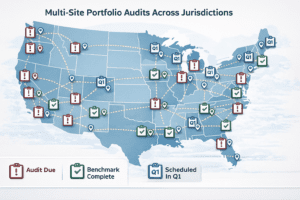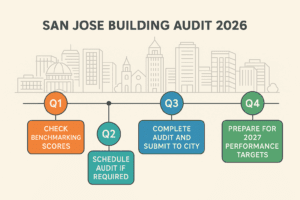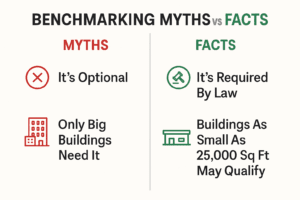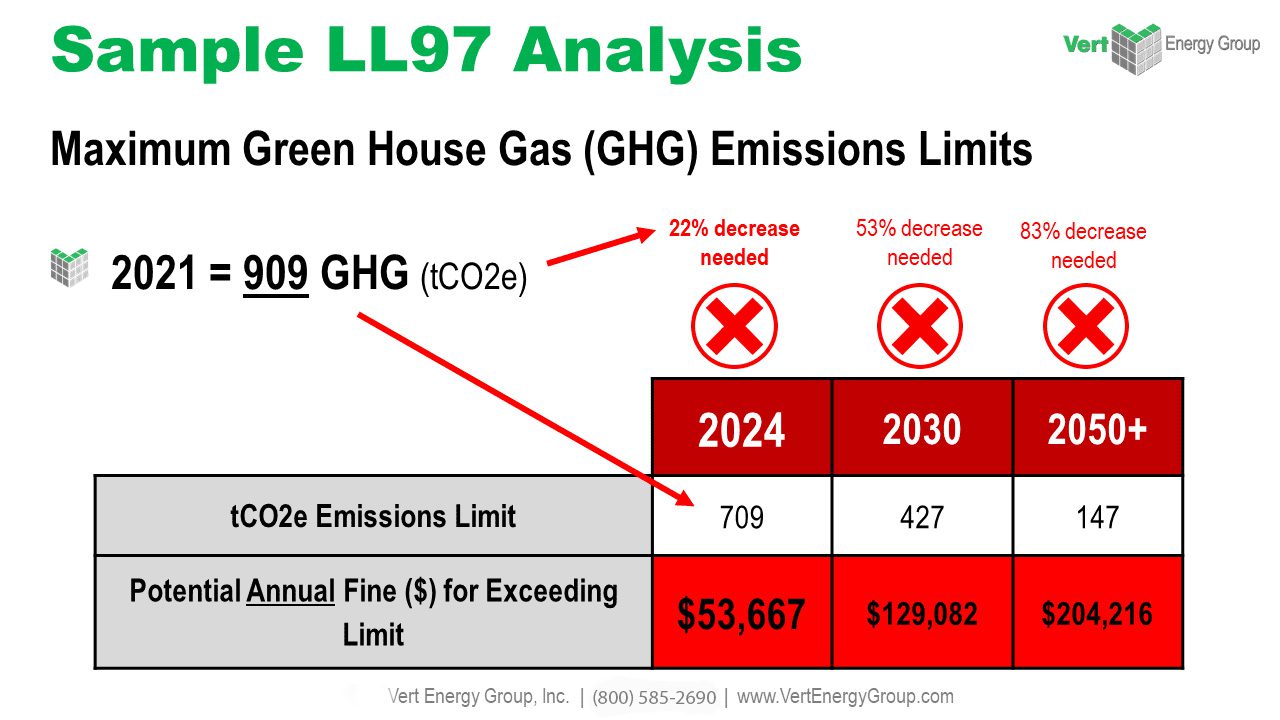Introduction
In San Jose, the heart of Silicon Valley, the pursuit of technological advancement goes hand in hand with a commitment to environmental stewardship and sustainability. Energy audits, a cornerstone of this eco-friendly initiative, represent a critical tool in San Jose’s effort to lead by example in energy conservation and sustainable living.
An energy audit is more than just a checklist. It’s a comprehensive evaluation designed to pinpoint where a building’s energy is consumed — and often wasted. By uncovering inefficiencies, energy audits provide actionable insights that can lead to significant cost savings and environmental benefits, aligning with the sustainable ethos that San Jose embodies.
San Jose understands the transformative power of these audits and is driving change through a series of bold initiatives aimed at making energy audits a standard practice. This proactive stance has been significantly bolstered by a cohesive web of government policies at the local, state, and federal levels, making energy efficiency not only an individual choice but also a regional movement.
Understanding the synergy between policy and practice is key to appreciating San Jose’s strategy for a greener future. This blog aims to dissect the role of government policy in advancing San Jose energy audit initiatives, delivering insights into the processes, policies, and impacts of these efforts on the city’s landscape.
Understanding Energy Audits
Definition and Purpose of Energy Audits
An energy audit can be defined as the methodical assessment of a building or facility designed to understand the energy consumption patterns, identify inefficiencies, and suggest improvements to reduce energy waste. This is achieved by collecting data on how and when energy is used, examining the building’s thermal envelope, inspecting HVAC systems, lighting, appliances, and other elements contributing to the building’s overall energy footprint.
The Process of Conducting an Energy Audit
Conducting an energy audit involves several stages:
– Initial Consultation: This phase involves gathering preliminary data, understanding the building’s energy history, and setting the scope for the audit.
– On-Site Inspection: Auditors visit the building to inspect its physical conditions and energy-related systems. They may use tools like blower doors and infrared cameras to detect areas of energy loss.
– Data Analysis: The auditor analyzes the data, often using specialized software, to track energy consumption patterns and pinpoints areas for improvement.
– Reporting: The final report provides detailed findings and recommendations, which may include both low-cost fixes and long-term investment opportunities.
– Implementation: These recommendations can then be implemented to make the building more energy efficient.
– Verification: Post-implementation, some audits include a verification stage to ensure the energy-saving measures are effective.
The Importance of Energy Audits in Achieving Sustainability Goals
An energy audit serves as the foundation for sustainability initiatives by offering a clear blueprint for reducing energy consumption. The insights gained can lead to a significant reduction in carbon footprint, aligning with sustainability goals at the individual, community, and global levels. As urban areas continue to grow, the role of energy audits becomes increasingly critical in achieving a sustainable balance between development and environmental conservation.
By implementing the recommendations of an energy audit, not only can buildings become more energy-efficient and cost-effective, but they can also contribute to the broader objectives of sustainability, such as reducing reliance on fossil fuels and mitigating the effects of climate change.
In San Jose, where innovation thrives and environmental responsibility is ingrained in the community’s ethos, energy audits are a key vehicle driving toward a future that upholds ecological balance without sacrificing technological progress.
Government Policies Supporting Energy Audit Initiatives
Explanation of How Government Policies Can Drive Energy Audit Initiatives
Government policy is a powerful lever in the world of environmental conservation and energy management. These policies can come in the form of tax incentives for energy-efficient upgrades, rebates for homeowners and businesses, grants for research into new energy-saving technologies, or regulations that set energy efficiency standards. Such interventions can significantly lower the barriers to entry for conducting energy audits and implementing recommended changes.
Key Federal and State Policies Influencing Energy Audits
Key policies impacting energy audits at the federal level include the Energy Independence and Security Act of 2007, which strengthens energy standards and promotes renewable fuels. At the state level, California’s AB 802, enacted in 2015, requires building owners to disclose energy usage data, which encourages energy audits by making energy consumption more transparent.
Examination of Specific Policies in San Jose Aimed at Promoting Energy Audits
In sync with federal and state mandates, San Jose has enacted its own policies tailored to the city’s unique needs. The San Jose Energy and Water Building Performance Ordinance, for example, requires large commercial and multifamily buildings to benchmark their energy and water performance annually using tools like the U.S. EPA’s ENERGY STAR Portfolio Manager. This not only encourages property owners to perform energy audits but also to continually assess and improve their buildings’ efficiency.
Moreover, through the Bay Area Regional Energy Network, which is a collaborative initiative of Bay Area counties, residents and businesses in San Jose have access to resources and incentives for conducting energy audits and making energy improvements.
Impact of Government Policies on San Jose’s Energy Audit Initiatives

The Influence of National and State Policies on San Jose’s Energy Audit Initiatives
The broader national and state policies have a trickle-down effect on cities like San Jose, where they are adapted to fit the local context. These policies not only provide a structured framework for action but also establish a culture of energy consciousness that permeates public and private sectors alike.
Specific Examples of How San Jose Has Utilized These Policies to Encourage Energy Audits
San Jose’s Building Division works closely with developers and residents to ensure energy efficiency measures are incorporated into new and existing buildings. This has led to an increase in the number of energy audits conducted, as property owners seek to comply with ordinances and take advantage of financial incentives.
Future Implications
Forecasting the Potential Influence of Future Government Policies on San Jose’s Energy Audit Initiatives
As the world continues to grapple with the realities of climate change, the role of energy audits and supportive government policies is likely to expand. Anticipating future policy directions, such as stricter emissions targets or mandatory audit requirements for certain types of buildings, could drive a new wave of energy efficiency initiatives.
Recommendations for Policymakers to Enhance the Impact of Energy Audits
To maximize the potential of energy audits, policymakers should consider a combination of carrots and sticks — incentives to reward proactive measures and regulations to ensure compliance. Continuing to invest in educational programs that demystify energy audits for the public will also be essential for sustained engagement.
Potential Challenges and Opportunities for San Jose in the Context of Energy Audits
Challenges such as technological adaptation and the upfront costs of retrofits are persistent barriers. However, there are opportunities within these challenges, like the growth of green jobs and the development of innovative financing mechanisms. San Jose has the chance to serve as a proving ground for solutions that may later be adopted by other cities nationwide or even internationally.
Conclusion
San Jose’s energy audit initiatives, catalyzed by a strategic interplay of government policies and community action, highlight a successful model for urban sustainability. The journey forward is an ongoing process of adaptation and commitment to the principles of conservation, efficiency, and sustainability. Reflecting on both the successes and challenges of San Jose’s endeavors, it’s evident that government policy will continue to be a pivotal driver in shaping the future of sustainable urban practices, setting an example for cities globally to follow in the pursuit of a balanced and energy-conscious world.
VertPro.com serves as a resourceful platform for property owners and managers seeking to enhance their buildings’ energy efficiency. The site offers a range of services, including Commercial Energy Audits, Benchmark Compliance consultancy, and a Construction Marketplace. At the heart of VertPro® is a suite of SaaS technology-based solutions designed to assist in navigating the complexities of Energy Benchmarking and Energy Audits/RCx Plus, while ensuring adherence to over 60 Energy Benchmarking and Energy Efficiency Laws across the country.
For those looking to improve their property’s energy usage and operational value, VertPro.com provides a diverse array of tools and information. The site aims to facilitate a better understanding of energy efficiency practices and legislation, helping building owners and property managers make informed decisions about their energy strategies while complying with all energy ordinances and laws.
